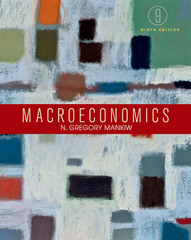Question
6. Aggregate demand, aggregate supply, and the Phillips curve In the year 2027, aggregate demand and aggregate supply in the imaginary country of Aso-Kuju are
6. Aggregate demand, aggregate supply, and the Phillips curve
In the year 2027, aggregate demand and aggregate supply in the imaginary country of Aso-Kuju are represented by the curves AD2027AD2027and AS on the following graph. The price level is currently 102. The graph also shows two potential outcomes for 2028. The first possible aggregate demand curve is given by the curve labeled ADAADAcurve, resulting in the outcome given by point A. The second possible aggregate demand curve is given by the curve labeled ADBADB, resulting in the outcome given by point B.



Step by Step Solution
There are 3 Steps involved in it
Step: 1

Get Instant Access to Expert-Tailored Solutions
See step-by-step solutions with expert insights and AI powered tools for academic success
Step: 2

Step: 3

Ace Your Homework with AI
Get the answers you need in no time with our AI-driven, step-by-step assistance
Get Started


